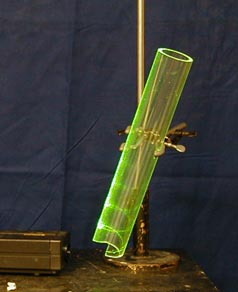
There are several ways to demonstrate total internal reflection. In the first variant, a laser beam enters a cylinder and is confined between the inner and outer surfaces, making a visible spiral.

In the second variant, a laser beam enters a cylindrical section of water from below at an adjustable angle and strikes the flat top surface. A laser beam enters a plastic half-cylinder at an adjustable angle and strikes the flat surface. The reflected and transmitted beams are clearly visible. At a sufficiently shallow angle, there is no transmitted beam, and total internal reflection is obtained.
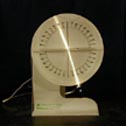
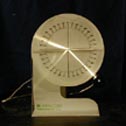
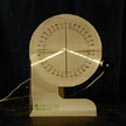
In the last variant, a hand-held laser pointer shines into a plastic rod, and the light beam bounces from surface to surface. (The beam itself is not clearly visible in the following picture, but shows up well in a classroom with the lights dimmed.)
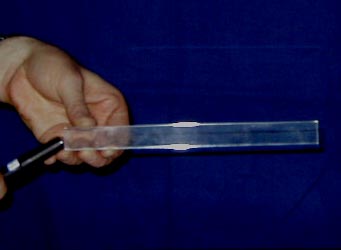
See also Fiber Optic Cables. .